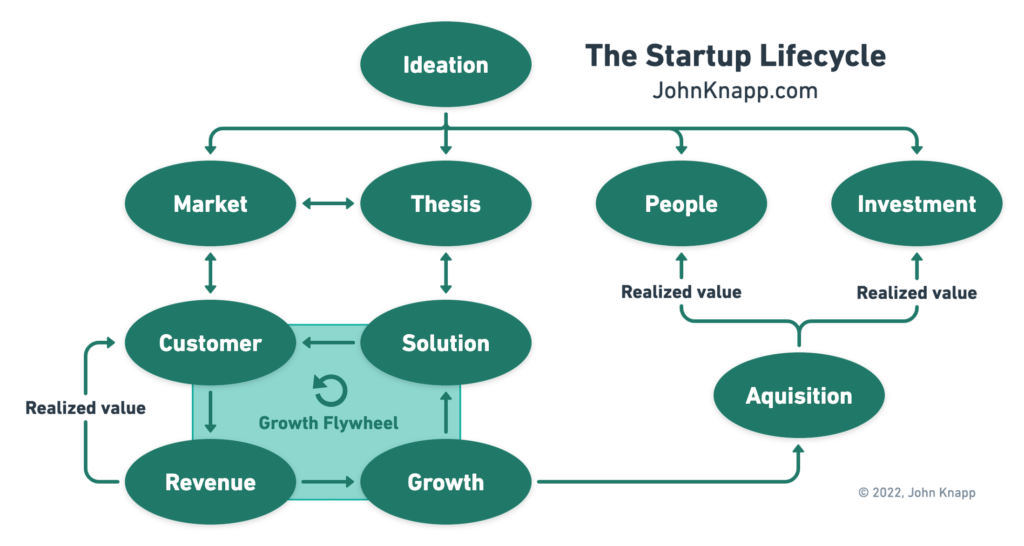
In the frenetic pace startups demand, it’s too easy to lose sight of the purpose the business serves for customers and stakeholders. Without that context, decision making suffers and mis-steps become more likely.
Mapping the essential aspects of startup success
The Startup Lifecycle is a visual framework giving leadership a “big picture view” of the landscape in which they operate. Ovals represent key “aspects” of the business and arrows show key interconnections.
The intent is to provide leadership with context so their priorities and deliverables fit properly into the landscape to avoid mistakes and insure optimal results are achieved.
Key concepts embodied within this framework:
- Ideation has no value without a market validated thesis, a team and sufficient capital
- The people who join the business must have passion for the thesis
- The thesis must be validated with the chosen market and the solution
- The solution must solve a problem people in the target market have
- The customer must have the ability to buy and receive ample value from their purchase
- Revenue (plus capital invested) must be sufficient to enable growth
While these concepts are obvious, their interactions are not always as obvious. Particularly when leadership is moving fast, they can lose context of how actions in one area impact other aspects of the business. And when these essential business aspects are misaligned, or work against each other, results suffer and risks emerge.
To put The Startup Lifecycle to work, leadership should:
- Focus on optimizing each aspect remaining cognizant of the larger context
- Make sure efforts in one aspect of the business don’t degrade another aspect
Keep the growth flywheel spinning:
Perhaps most important of all, the entire staff must stay sharply focused on the virtuous circular connections which drive the growth flywheel:
- The solution delivers customers
- The customer provides revenue, and gets value from that purchase
- Revenue drives growth
- Growth enables superior solutions and further customer revenue
And for most startup entrepreneurs, perhaps the most important connections shown is that growth opens the door to acquisition and acquisition delivers realized value to the team and the investors.
I developed the framework based on my own startup experience and through the founders I’ve mentored. It has helped me keep my activities focused and aligned with the needs of the business.
I hope you find it helpful growing your business. Let me know!
